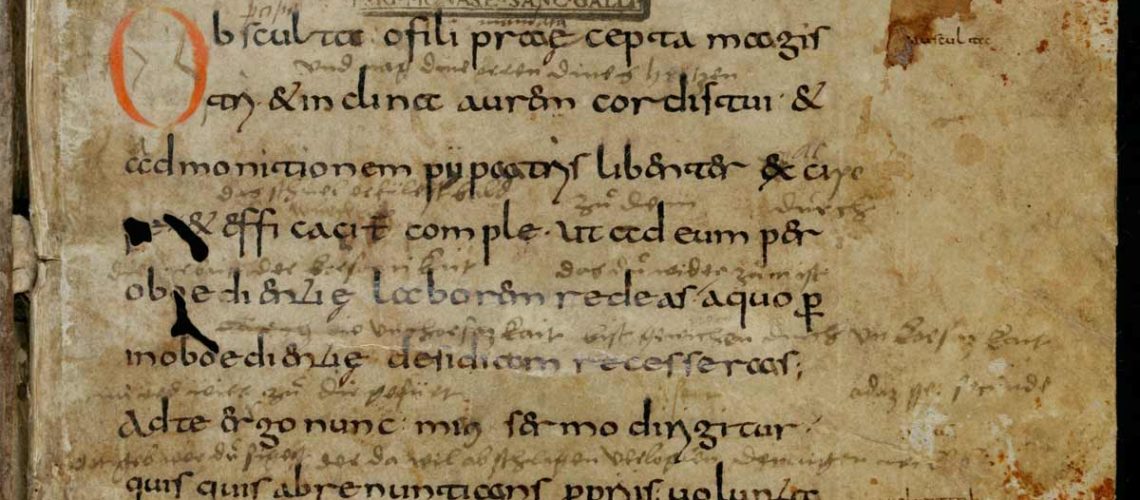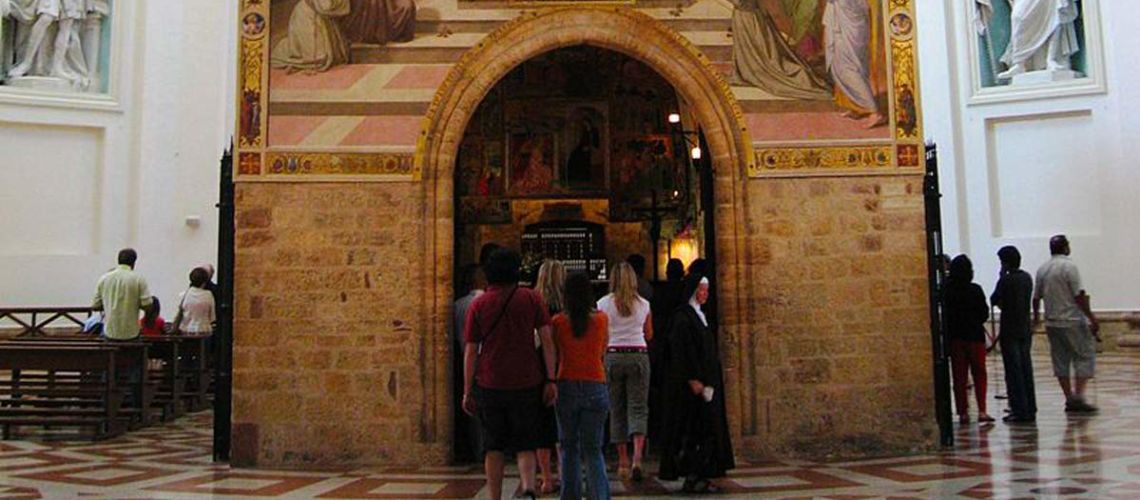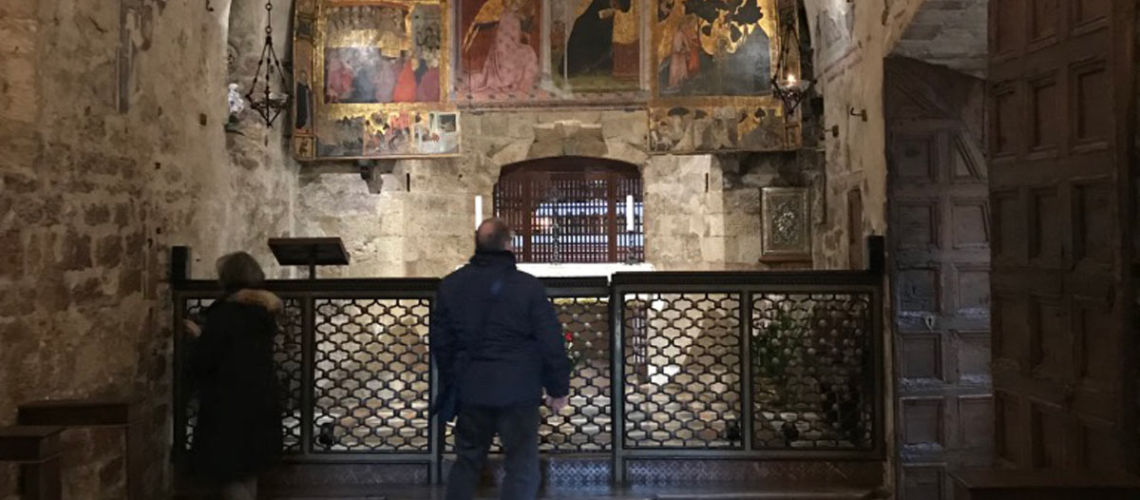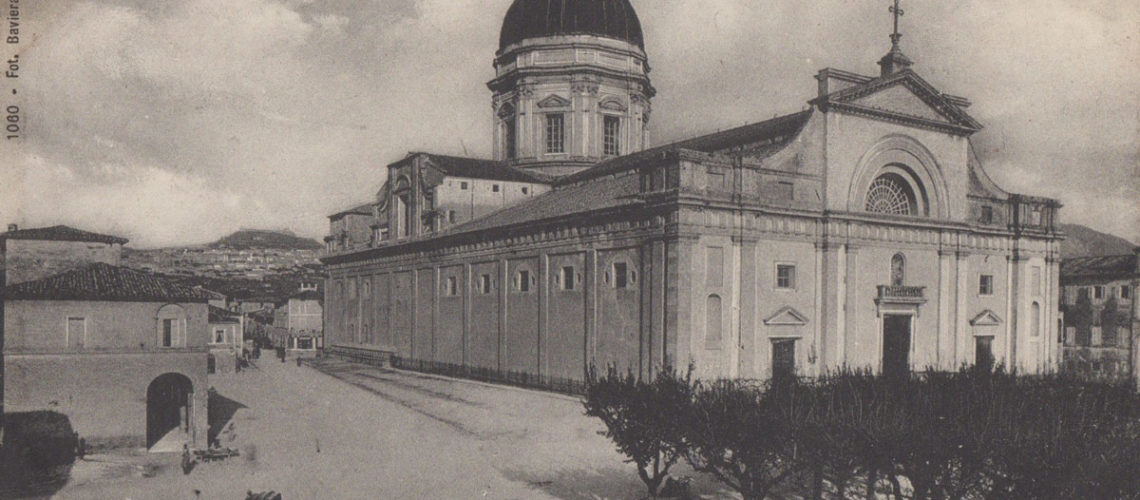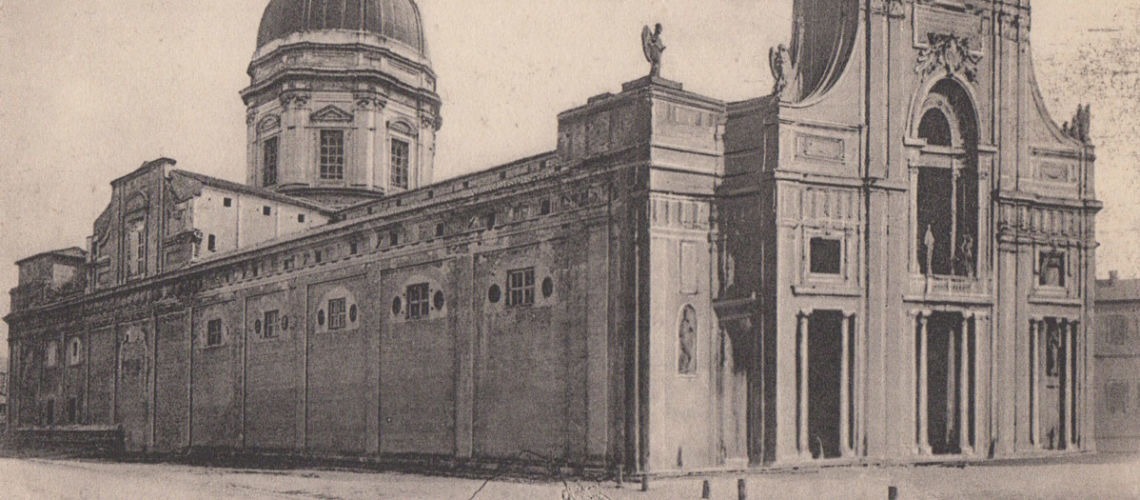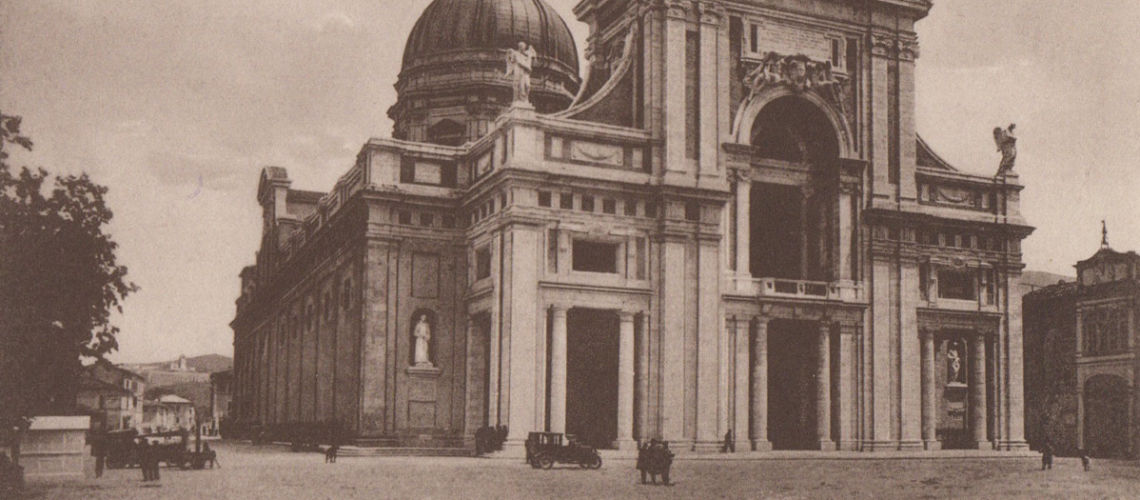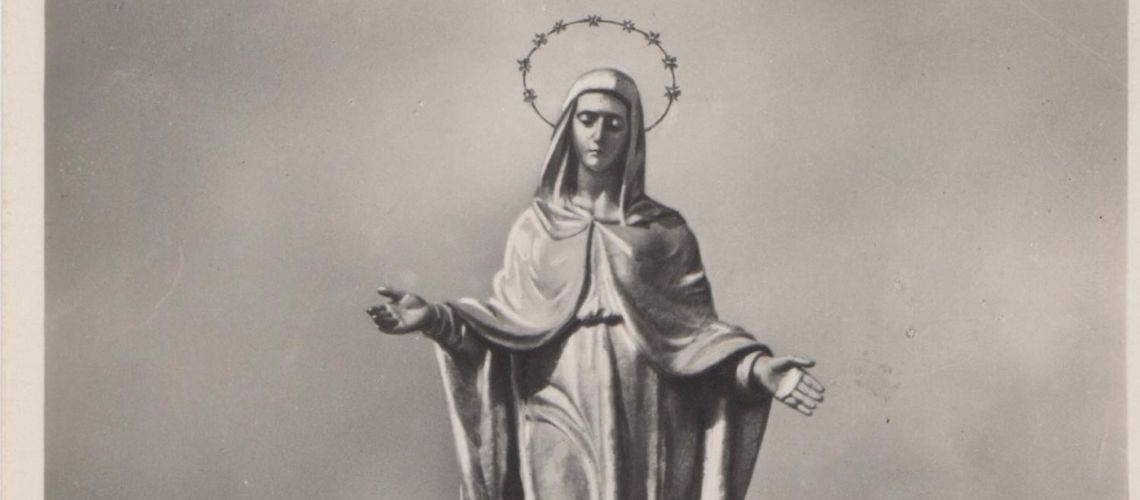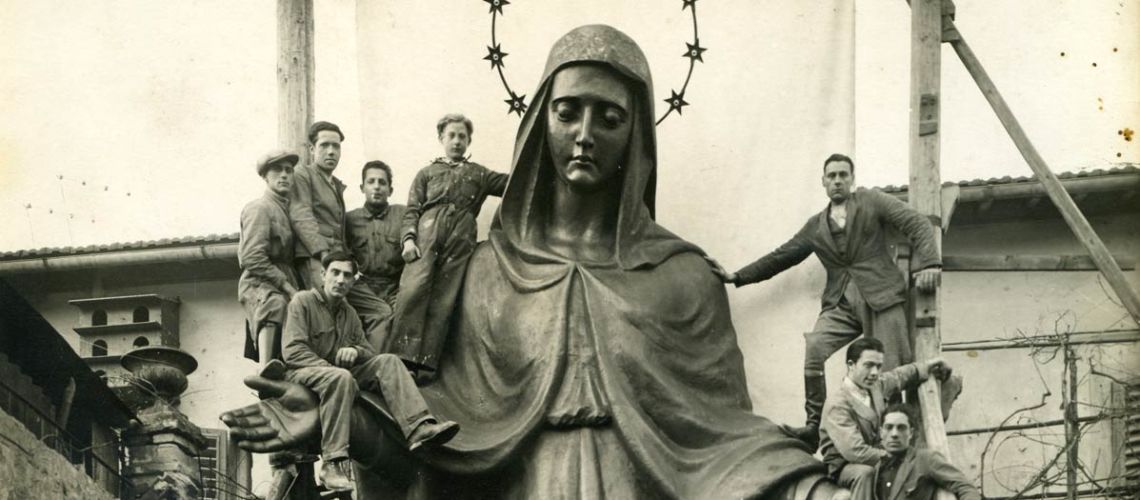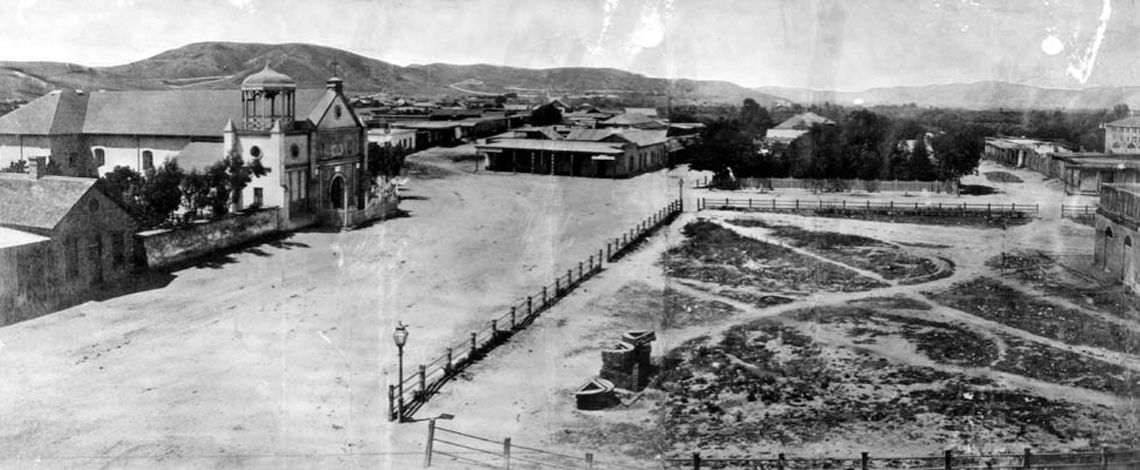Assisi, St. Mary of the Angels
Los Angeles, St. Francis and the Porziuncola in Assisi
Thirty years after the death of St. Benedict (547), author of the famous Rule (the oldest manuscript codex of the Rule, dated 810, Abbey of St. Gall in Switzerland),
it was built in 576, between the woods at the foot of Assisi, an oratory of the Benedictine monks of the convent of Monte Subasio. In the ‘200 was a place of prayer and meditation for St. Francis, who restored it: it is the famous “Porziuncola”, where Francis also died in 1226.
Pope Pius V in 1569 began the construction of a large basilica, designed by architect Galeazzo Alessi, around the Porziuncola which constantly attracted crowds of faithful, both for San Francesco and for the indulgences that Pope Honorius III at the beginning of the ‘200 he had established to whom visited it.
Following heavy damage caused by the earthquake of 1832 the basilica was restored and was endowed with a new facade.
The façade seems to have had no peace: in the 20th century it was rebuilt according to a design by the architect Luigi Paoletti and completed in 1930.
On that occasion the monumental Golden Madonna, was placed on top of the façade commissioned at the sculptor Guglielmo Colasanti,
and cast in lost wax at the Ferdinando Marinelli Foundry in Florence.
Los Angeles
On 31 July 1769 the Spanish adventurer Gaspar de Portola, together with Serra and Crespi, two Franciscan friars, discovered a river in Southern California, which baptized Rio de Nuestra Seniora la Reina de los Angeles de Porciuncola of Assisi, because the day after, the first of August, the Feast of the Forgiveness was celebrated in Assisi (the one established by Pope Honorius III). In 1781, Mexican colonists founded a village near the river, also called El Pueblo de Nuestra Seniora la Reina de los Angeles de Porciuncola, now closed in the Olvera Street district of the Los Angeles megalopolis. In 1847, California became American and in 1850 the village, with the shortened name of Los Angeles, became a Municipality, still remaining a small frontier country,
until, in 1892, the discovery of oil made it “explode” in a few decades.

